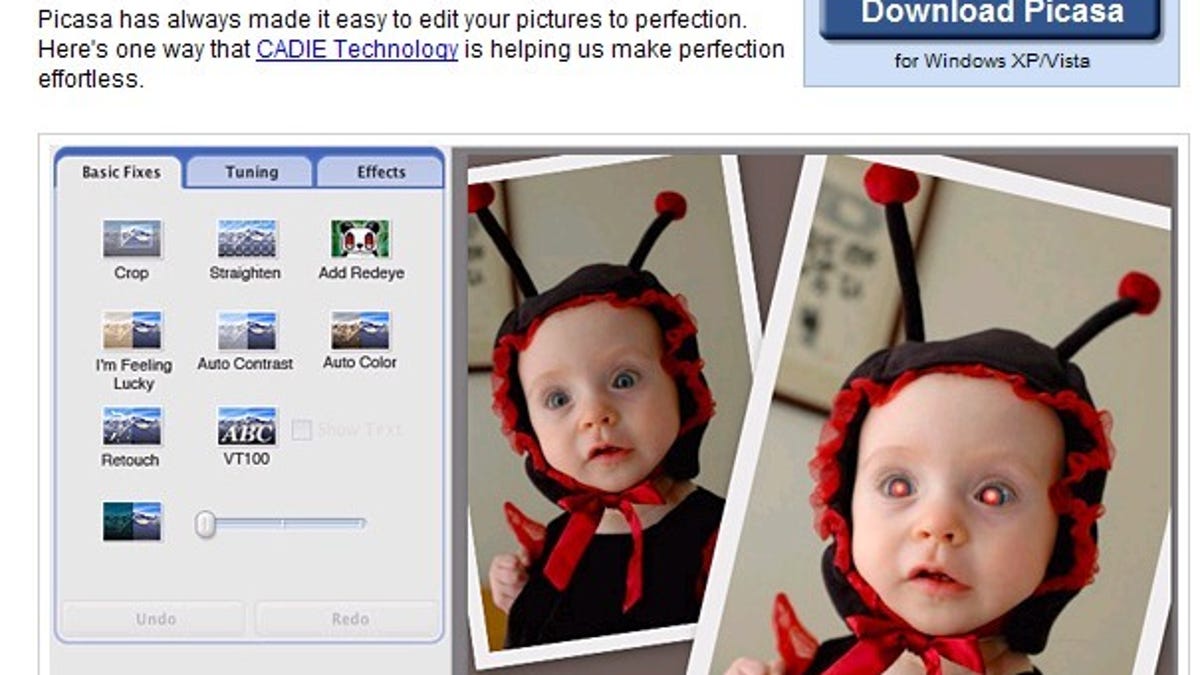April Fools: Google's sentient computer takes over
Google's misguided artificial intelligence project offers automatic red-eye, Chrome in 3D, computer-generated e-mail, other AI bungles. Another prank: inverted YouTube.
Google loves its April Fools' jokes, and this year a prank emerged in the form of CADIE--an artificial-intelligence research project with a cute panda avatar--taking over the search giant.
"We're pleased to announce that just moments ago, the world's first Cognitive Autoheuristic Distributed-Intelligence Entity (CADIE) was switched on and began performing some initial functions," according to a CADIE description accompanying the faux announcement.
The site pointed to CADIE's YouTube channel and CADIE's blog.
Among CADIE's abilities:
• Gmail Autopilot, which answers your e-mail for you.
•
Chrome updated for use with red-and-blue 3D glasses (predictably but disappointingly, the CADIE Chrome EULA looks unmodified from the original).
• A Picasa Web Albums feature to add red-eye to your photos.
• Brain Search for Mobile (with a graphical tip of the hat to XKCD, I'm guessing).
Here's Google's description of the bogus feature of Picasa 4.1.
New! Automatic Red-Eye Addition
Approximately 4.1 seconds after achieving sentience, Google's new Cognitive Autoheuristic Distributed-Intelligence Entity scanned the corpus of online digital photographs and discovered the exceptionally popular but difficult to achieve photographic technique known as "red-eye."
Having established that "red-eye" is an aesthetically pleasing effect implying superior broad-spectrum lux measurement capability, CADIE has directed the human Picasa Team to introduce Auto-Red-Eye. No more "clicking and hoping" for that telltale glow; now you can simply select any photo(s) and a lovely red-eye effect will appear (unless there are no eyes in the shot whatsoever, in which case the image will be destroyed).
(Note that 4.1, whether seconds or version numbers, can also be read as April 1.)
Also, I didn't detect a CADIE reference, but YouTube inverted its videos and text of videos linked from its home page (perhaps with this Unicode font inversion technology).
"Our internal tests have shown that modern computer monitors offer better picture quality when flipped upside-down," the video-sharing site said on its blog. "The page also makes it simpler for you to view content in the southern hemisphere."
Also, note the GPS-enabled gBall from Google's Australian outpost.


